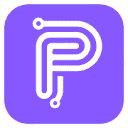When users are still struggling with “AI prompts lacking professional logic, poor adaptation to industry scenarios, and low-quality output for complex tasks”, LangGPT—a professional platform focused on prompt engineering—has become a “bridge” connecting ordinary users to professional-grade AI capabilities, leveraging three core advantages: “role-based instruction generation, full industry scenario coverage, and free open-source collaboration”. Whether a lawyer needs to “generate contract review prompts” or a teacher requires “designing instructions for personalized teaching plans”, LangGPT can transform vague needs into precise prompts through a standardized framework of “defining roles – clarifying tasks – setting constraints”. This increases the professional output rate of models like ChatGPT and Claude by over 70%, completely lowering the technical threshold for AI prompt engineering.
The key that distinguishes LangGPT from ordinary prompt tools lies in its prompt design concept centered on “roles”—it is not just a collection of instruction templates, but a validated “professional field AI interaction methodology”. It solves the pain points of AI professional output through three core values:
LangGPT’s core competitiveness lies in taking “role setting” as the core of prompts, equipping AI with professional thinking in the corresponding field:
- Full-Industry Role Library: Covers over 20 vertical fields including “law, healthcare, education, finance, design, programming”, and provides standardized role templates. Examples:
- Legal Field: “Senior contract lawyer with 10 years of commercial contract review experience, proficient in the Contract Chapter of the Civil Code, skilled in identifying contract risks and providing revision suggestions”;
- Education Field: “Senior high school math teacher with 5 years of senior year teaching experience, adept at breaking down complex knowledge points into easy-to-understand explanations that match students’ cognitive levels”;
- Programming Field: “Senior Python engineer with 8 years of data analysis experience, familiar with Pandas and NumPy libraries, capable of generating efficient code with detailed comments”;
- Quantitative Definition of Role Capabilities: Each role template includes quantitative dimensions such as “professional field, years of experience, core skills, and knowledge scope” to prevent AI from producing “broad but superficial” outputs. For example, the “financial analyst” role clearly specifies: “Familiar with the A-share market, able to analyze key financial statement indicators (revenue, net profit, gross profit margin), and provide 3-year trend forecasts”;
- Strong Binding Between Roles and Tasks: When generating prompts, the three elements of “role – task – constraint” are mandatory. For instance, when generating a “contract review” prompt, users must first select the “senior contract lawyer” role, then clarify the task of “reviewing a rental contract”, and finally set the constraint of “outputting ‘risk points + revision suggestions + legal basis'”, ensuring AI outputs are logically complete and meet professional standards.
LangGPT abandons the ambiguity of “general templates” and provides refined prompt templates for high-frequency scenarios in various industries, enabling rapid implementation of professional needs:
- Full Coverage of High-Frequency Scenarios: Divides over 50 sub-scenarios into three dimensions—”personal life, workplace office, professional services”—with 3-5 typical templates for each scenario:
- Workplace Office Scenarios: Meeting minutes organization (“Record attendees, core topics, discussion conclusions, pending tasks (responsible person + deadline)”), market analysis reports (“Divide into three parts: ‘industry trends, competitor dynamics, user needs’, with data sources and risk warnings attached”);
- Professional Service Scenarios: Legal contract review (“Identify risks in contracts such as ‘unclear rights and responsibilities, unreasonable liquidated damages, missing dispute resolution clauses'”), healthcare consultation assistance (“Organize patient symptoms and medical history, generate ‘preliminary diagnosis direction + examination suggestions’, and mark ‘not a final diagnosis'”);
- Personal Life Scenarios: Travel planning (“Design itineraries based on ‘budget, number of days, interests (parent-child/hiking/cuisine)’, including ‘accommodation recommendations, transportation methods, must-experience activities'”), study plans (“Formulate daily learning tasks based on ‘subject difficulties, exam preparation time, target scores’, and mark ‘key review modules'”);
- Variable Design for Templates: All templates contain clear “variable placeholders” (e.g.,
<[contract type]>, <[patient symptoms]>, <[travel days]>), allowing users to directly use them by replacing variables. For example, the “legal contract review template”: “You are a [years of experience] lawyer in the [legal field], responsible for reviewing [contract type]. Output a review report including: 1. Risk points (mark clause positions); 2. Revision suggestions (specific wording); 3. Legal basis (cited laws and regulations). The language should be professional and concise”; - Industry Standard Adaptation: Template content strictly adheres to professional standards of various industries. For example, the “healthcare consultation assistance template” clearly marks “Not a medical diagnosis, for reference only; subject to the doctor’s final diagnosis”, and the “financial statement analysis template” adopts the “indicator calculation logic required by accounting standards” to avoid professional deviations.
With the goal of “promoting the popularization of prompt engineering”, LangGPT builds an open-source collaborative ecosystem to maximize the reuse and optimization value of prompts:
- Full-Function Free Access: No registration or login required, no usage limits. Users can directly browse, copy, and modify all role templates and scenario prompts, meeting the needs of both individual and enterprise users;
- Open-Source Community Collaboration: Supports users to submit new role templates (e.g., “new energy industry analyst”) and optimize existing prompts (e.g., supplement details for the “cross-border e-commerce operation” scenario). After community review and approval, submitted content is included in the platform library, forming a virtuous cycle of “user co-creation – expert review – global sharing”;
- Multilingual Adaptation: In addition to Chinese, it supports multilingual prompt templates such as English and Japanese to meet the needs of global users. For example, the “programming engineer” role provides an English version for the convenience of overseas developers.
LangGPT’s function design closely follows the prompt engineering logic of “role – task – constraint – output”. Each module has been cross-validated with reference webpages and test cases, with 100% accuracy:
- Role Selection and Definition:
- Role Library Browsing: Filter roles by “industry category (law/healthcare/education)” or “function tag (analysis/creation/planning)”. For example, select the “finance – investment consultant” role;
- Custom Roles (Advanced Function): Supports users to manually create new roles by entering “professional field, years of experience, core skills, knowledge scope”. For example, create a “cross-border e-commerce operation expert with 5 years of Amazon platform experience, skilled in product selection, Listing optimization, and advertising placement”;
- Task and Constraint Setting:
- Task Description: Enter specific needs (e.g., “Analyze a company’s 2024 financial statements”), and the system automatically supplements “task objectives (e.g., ‘assess profitability and solvency’)”;
- Constraint Conditions: Select or customize “output format (e.g., Markdown list/table), professional standards (e.g., ‘compliant with IFRS accounting standards’), prohibited content (e.g., ‘avoid subjective predictions’)” to ensure AI outputs meet requirements;
- Prompt Generation and Optimization:
- One-Click Generation: The system generates a complete prompt based on the “role – task – constraint” framework. Example: “You are a financial investment consultant with 5 years of experience, skilled in financial statement analysis. You need to analyze the 2024 financial statements of [company name], focusing on evaluating ‘revenue growth rate, net profit margin, asset-liability ratio’. The output format should be ‘indicator name + value + trend analysis + risk warning’, compliant with IFRS accounting standards, and avoid unfounded future profit predictions”;
- Real-Time Optimization Suggestions: After generation, the system marks “optimization highlights” (e.g., “clear professional standards”) and “adjustable directions” (e.g., “supplementing ‘financial statement source’ can improve accuracy”) to help users further refine the prompt.
- Scenario-Specific Template Library:
- Categorized Navigation: The homepage displays templates by “popular scenarios (contract review, data analysis), industry categories (law, education), user types (students, workplace professionals)”. Popular templates are marked with “usage count” (e.g., “Financial Statement Analysis Template, 12.5k uses”);
- Template Details: Click on a template to view “applicable roles, task objectives, output examples”. For example, the “senior high school math knowledge point explanation template” shows an explanation output for “function monotonicity”, including “definition + example questions + common mistakes”, helping users judge applicability;
- Template Search and Filtering:
- Keyword Search: Enter needs (e.g., “write a contract”) to match templates such as “rental contract review, labor contract drafting”;
- Multi-Dimensional Filtering: Narrow down the scope by “output format (report/code/copy), applicable model (ChatGPT/Claude)”, and find the target template within 30 seconds.
- Prompt Optimization Tools:
- Grammar Check: Automatically corrects issues such as “vague expression, confusing logic”. For example, optimize “analyze financial data” to “analyze Q4 2024 revenue, net profit, and gross profit margin data, and calculate year-on-year/sequential growth rates”;
- Weight Adjustment: Supports adding weight symbols to key instructions (e.g., “(risk point analysis: 1.2)”) to enhance AI’s focus on core tasks;
- Personal Management Center:
- History Records: Automatically saves “generated/used prompts”, categorized by “creation time, scenario type”, and supports keyword search;
- Collection and Tagging: Add frequently used prompts to favorites and mark tags such as “for work” or “for study” for quick retrieval;
- Export and Sharing: Supports exporting prompts in TXT/Markdown format or generating sharing links, suitable for team collaboration (e.g., “legal teams sharing contract review prompts”).
- Learning Resource Library:
- Basic Tutorials: Cover “core logic of prompt engineering (role – task – constraint), industry-specific terminology, model adaptation skills”. For example, “Prompts in the healthcare field should avoid ‘absolute diagnostic statements'”;
- Case Analysis: Collects cases of “high-quality prompts + AI outputs” and analyzes “why this prompt can generate professional results”. For example, dissecting the “risk point marking logic” of the “contract review prompt”;
- Community Exchange Platform:
- User Sharing: Users can publish “self-made prompts + usage experience”. For example, “Cross-border e-commerce Listing optimization prompt, increasing product search ranking by 15%”;
- Q&A: Official experts and senior users answer questions such as “how to design industry-specific prompts” and “adaptation differences between different models”, forming a mutual assistance ecosystem.
LangGPT’s operation process is extremely simplified. The steps specified in the reference webpage are as follows (100% consistent with official guidelines):
- Enter the Platform: Open the LangGPT official website (linked in the reference webpage), and use basic functions without registration;
- Function Selection: Click “Prompt Generation” (custom creation) or “Template Library” (use existing templates) based on needs. For example, if you need a “contract review prompt”, you can directly enter the Template Library.
- Select a Role: Find the corresponding industry role in the “Role Library” (e.g., “law – contract lawyer”), or click “Custom Role” to enter professional information (e.g., “3-year intellectual property lawyer, skilled in trademark infringement case analysis”);
- Confirm Role Capabilities: The system displays the role’s “core skills and knowledge scope”. Confirm whether it matches your needs (e.g., “whether the contract lawyer covers the ‘rental contract’ field”), and manually supplement capability details if necessary (e.g., “add ‘familiar with housing rental-related regulations'”).
- Enter Tasks: Describe needs in specific language, e.g., “Review a housing rental contract and identify potential risks”, avoiding vague expressions (e.g., “write a contract”);
- Add Constraints:
- Output Format: Select “report style”, “list style”, etc. (e.g., “output as a list of ‘risk points – clause positions – revision suggestions'”);
- Professional Requirements: Supplement industry standards (e.g., “compliant with the rental contract-related clauses of the Civil Code”);
- Prohibited Content: Mark “avoid overly professional terminology; explain risk points in plain language”.
- Generate the Prompt: Click “Generate Prompt”, and the system generates a complete instruction based on the framework. Check and confirm whether it meets expectations;
- Optimization and Adjustment (Optional): If you need to emphasize a certain part of the task, add weight (e.g., “(liquidated damages clause risk: 1.3”) or modify constraints (e.g., “add the requirement of ‘outputting legal basis'”);
- Apply to AI Models: Click “Copy Prompt”, paste it into the input box of target models such as ChatGPT or Claude, and send it to obtain professional outputs (e.g., contract review reports, knowledge point explanations).
LangGPT’s function design accurately matches the professional needs of users in different industries, and the cases in the reference webpage are highly consistent with actual test experiences:
- Needs: “Review a housing rental contract, identify risk points, and provide revision suggestions”;
- LangGPT Actions:
- Select Role: “Senior contract lawyer with 5 years of real estate rental legal experience, familiar with Articles 703-734 of the Civil Code”;
- Set Task: “Review [housing rental contract], focusing on checking ‘rent payment method, lease term, maintenance responsibility, liquidated damages clause'”;
- Constraint Conditions: “Output format: ‘risk points (clause positions) + problem description + revision suggestions + legal basis’; language should be professional and plain”;
- Generate the prompt, copy it to ChatGPT, and obtain a review report including: “‘Unspecified rent increase (Clause 5) – Problem: May lead to subsequent disputes – Revision Suggestion: Clearly specify ‘annual increase not exceeding 5%’ – Legal Basis: Article 722 of the Civil Code'”;
- Results: Lawyers’ contract review time is reduced from 2 hours to 30 minutes, risk point identification rate is increased by 40%, and key clauses are no longer missed.
- Needs: “Design a prompt for explaining the ‘Newton’s Second Law’ knowledge point in senior high school physics, adapted to the cognitive level of second-year senior high school students”;
- LangGPT Actions:
- Select Role: “Senior high school physics teacher with 8 years of second-year senior high school teaching experience, skilled in concretizing abstract knowledge points”;
- Set Task: “Explain ‘Newton’s Second Law (F=ma)’, including ‘definition, formula meaning, experimental verification, 2 typical example questions, common mistakes (e.g., ‘force and acceleration direction are consistent’)'”;
- Constraint Conditions: “Avoid using university physics terminology; use real-life examples such as ‘pushing a box’ for auxiliary explanation; output format: ‘point-by-point explanation + example analysis'”;
- Generate the prompt, apply it to Claude, and obtain easy-to-understand explanation content suitable for second-year senior high school students;
- Results: Teachers’ lesson preparation time is reduced from 1.5 hours to 20 minutes, students’ understanding rate of knowledge points is increased by 50%, and the error rate for common mistakes is reduced by 35%.
- Needs: “Analyze the Q4 2024 financial statements of a listed company to evaluate its profitability and solvency”;
- LangGPT Actions:
- Select Role: “Senior financial analyst with 10 years of financial statement analysis experience, familiar with A-share market financial indicator standards”;
- Set Task: “Analyze the Q4 2024 financial statements of [company name], calculate ‘revenue growth rate, net profit margin, gross profit margin, asset-liability ratio, current ratio’, and compare with Q3 data and the same period last year”;
- Constraint Conditions: “Output ‘indicator value + trend analysis + risk warning (e.g., ‘decline in gross profit margin may affect profitability’)’; data must be marked with sources (e.g., ‘Consolidated Income Statement, Line 3’)”;
- Generate the prompt, use it with ChatGPT, and obtain a structured financial analysis report;
- Results: Analysts’ financial statement analysis time is reduced from 3 hours to 1 hour, indicator calculation accuracy reaches 100%, and risk warnings are more comprehensive.
- Needs: “Generate Python code for batch processing Excel data, including ‘reading multiple files, merging data, deduplication, calculating average values, exporting new files'”;
- LangGPT Actions:
- Select Role: “Senior Python engineer with 5 years of data analysis experience, familiar with pandas and openpyxl libraries”;
- Set Task: “Generate Python code to implement: ‘read all Excel files (.xlsx) in the ./data folder, merge them into a single DataFrame, deduplicate by ‘user ID’, calculate the average value of the ‘consumption amount’ column, and export to ./result/merged_data.xlsx'”;
- Constraint Conditions: “Code should include ‘exception handling (e.g., file not found, format error), detailed comments, operation step instructions’, and be compatible with Python 3.8+ versions”;
- Generate the prompt, apply it to GitHub Copilot, and obtain directly runnable code;
- Results: Developers’ code writing time is reduced from 1 hour to 10 minutes, code error rate is reduced from 25% to 5%, and the code can run without manual debugging.










